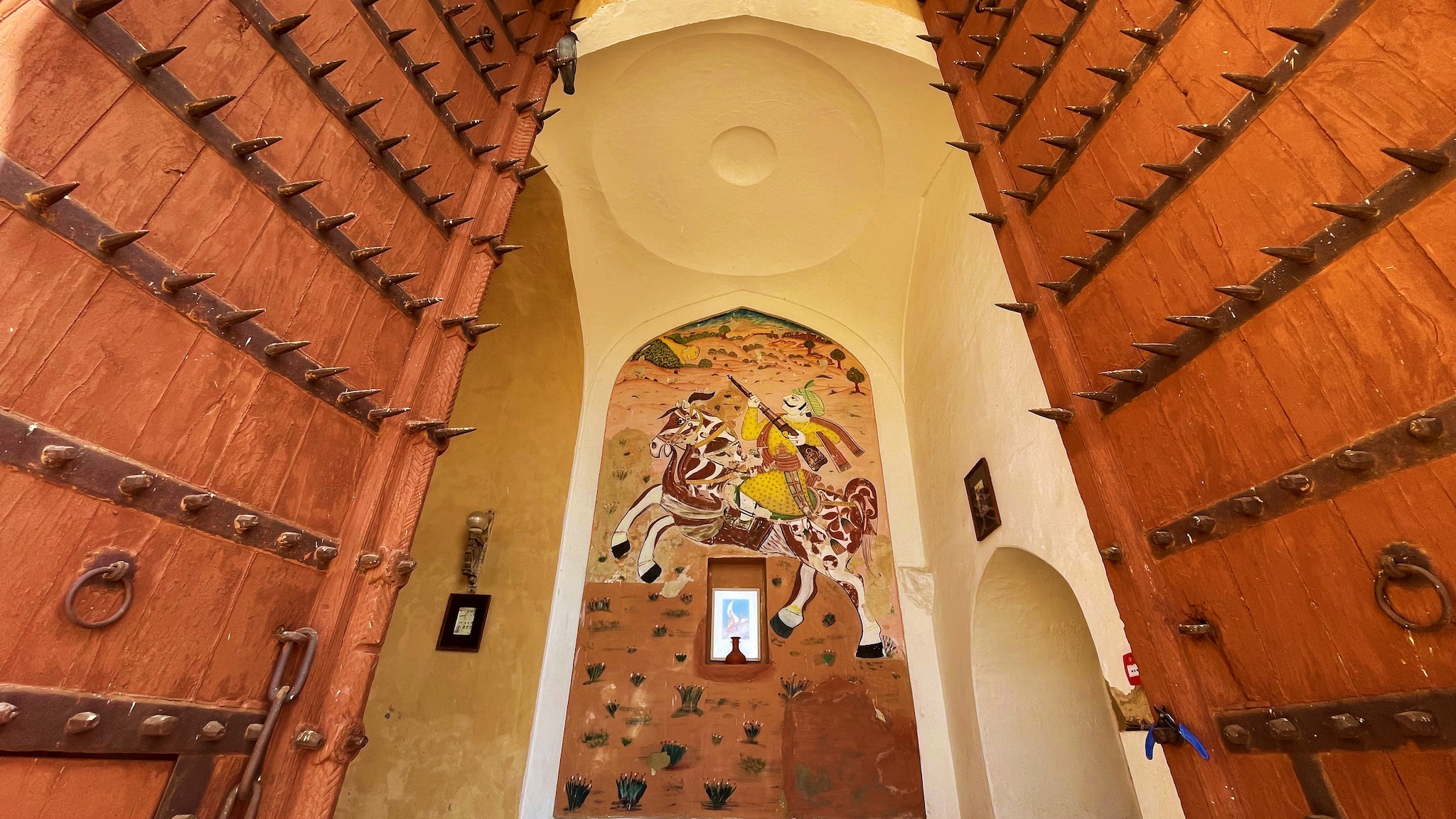 Vanquished by the legendary Prithviraj Chauhan in 1192, the region’s erstwhile ruler Nimola Meo secured an enduring legacy when his poignant request to immortalize his name was honored, giving birth to what we now know as Neemrana
Vanquished by the legendary Prithviraj Chauhan in 1192, the region’s erstwhile ruler Nimola Meo secured an enduring legacy when his poignant request to immortalize his name was honored, giving birth to what we now know as Neemrana
Images: Veidehi Gite
As I gaze out from the stately ramparts of Neemrana Fort Palace, my mind wanders to the ballet of power and survival that played out in this corner of Rajasthan centuries ago. What once served as a tactical vantage point for vigilant warriors now offers visitors a panorama of the undulating countryside. Historical accounts suggest that Neemrana’s name finds its roots in the 11th-century ruler Nimola Meo, who once governed the region. After his defeat by Prithviraj Chauhan in 1192, Nimola Meo is said to have requested that the area bear his name, thus christened Neemrana. Just two hours from Delhi, it is also where I discovered that royal might wasn’t measured solely by the height of fortress walls, but probably also by something far more essential: Water.
On a winter morning, the formidable silhouette of Neemrana Fort Palace emerged through the haze as my car navigated the serpentine ascent of Mahal road. Time seemed to slow as each turn revealed new angles of this 15th-century wonder. Like a crown atop the Aravali hills, its weathered stones stood as an ode to Rajasthan’s royal heritage and endurance. The grand arched gate opened to a cavernous limestone corridor, crowned by an antique clock ticking methodically. Past it emerged a landscape awash in emerald—a fortress that holds within it a labyrinth of courtyards, terraces, and gardens with poetic names like Uncha Baag, Mukut Baag, and Jalgiri Mahal.
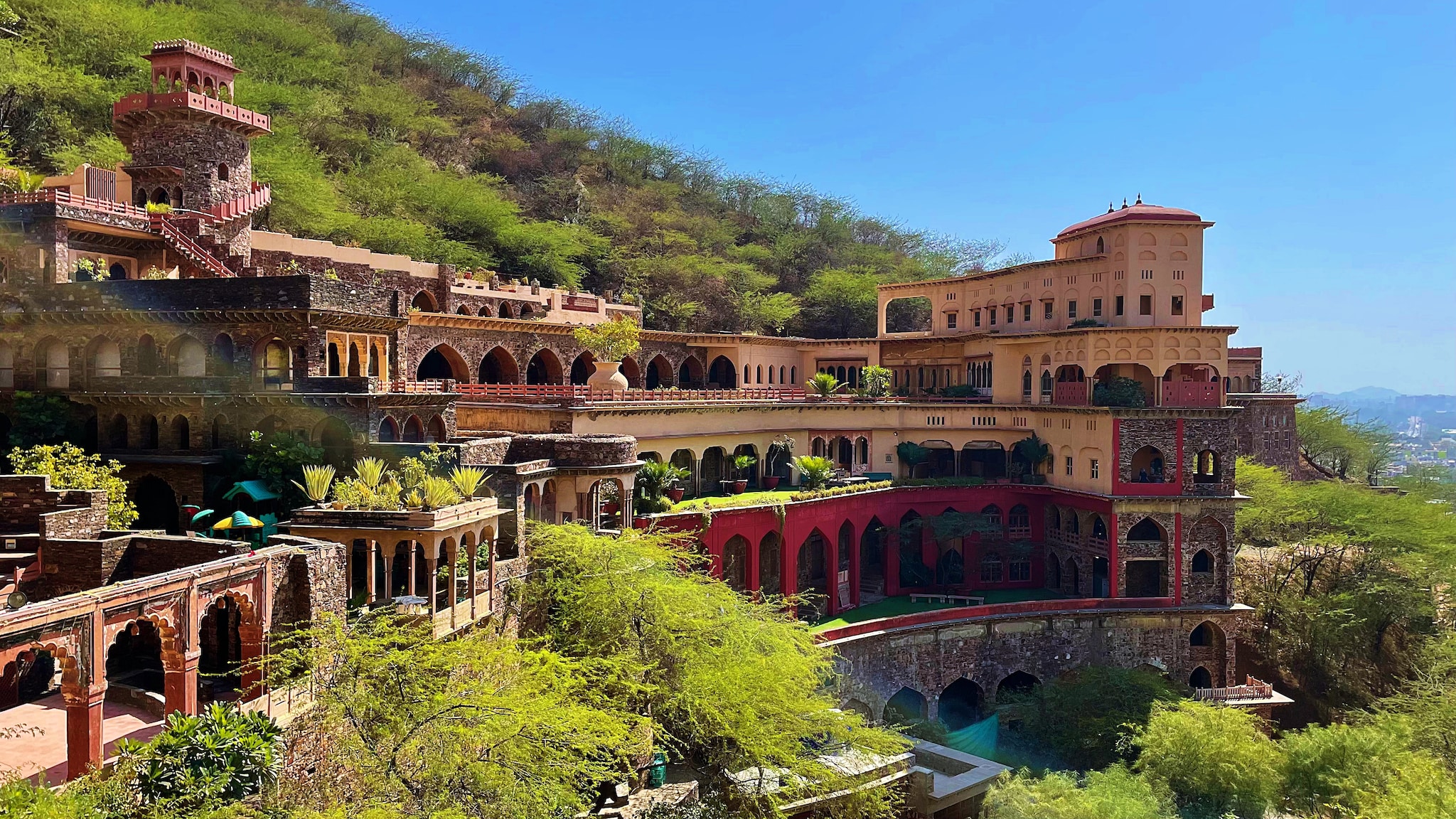 Neemrana Fort Palace, once a frontier outpost for the descendants of 12th-century Rajput king Prithviraj Chauhan III, was later transformed into a sprawling luxury heritage hotel.
Neemrana Fort Palace, once a frontier outpost for the descendants of 12th-century Rajput king Prithviraj Chauhan III, was later transformed into a sprawling luxury heritage hotel.
The Neemrana Fort traces its origins to the descendants of the legendary Prithviraj Chauhan III, who constructed it in 1464 after he lost the throne in Delhi to Muhammad Ghori. By 1947, the palace’s façade was crumbling, and its ramparts were deteriorating, forcing Raja Rajinder Singh of Neemrana to abandon it. It was converted into a heritage hotel in 1991.
The hotel retains its medieval soul while offering modern luxuries within its storied walls. Peering up at the palace, you’re struck by quintessential Rajasthani grandeur. Ornately carved jharokhas—those dramatic overhanging enclosed balconies—jut out from the facade like jewelry boxes frozen in stone. A riveting patchwork of multicoloured glass creates stunning mosaics, while arched windows serve as perfect frames for the rugged landscape beyond. Original features like ancient iron doors with traditional kundis (door handles), a piece of vintage furniture here, a centuries-old wall painting there, coexist harmoniously with contemporary amenities.
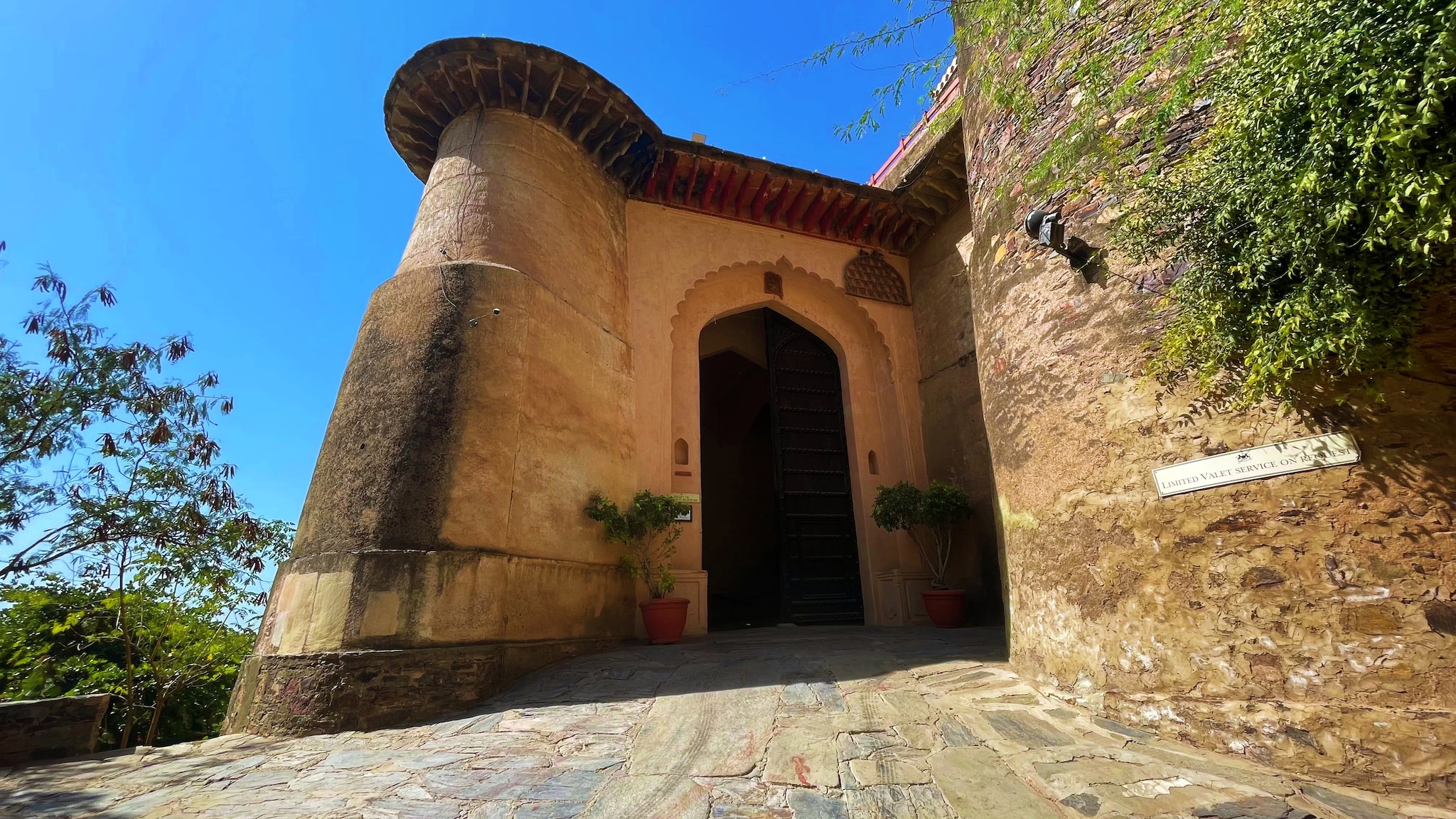
The Neemrana Fort-Palace has multiple gates, with Surya Pol (the Sun Gate) serving as the main entrance alongside other gates like Jai Pol, Laxman Pol, Chand Pol, Krishen Pol, and Andheri Gate.
I find myself lost in the older wing, where stone-and-plaster walls embrace intimate courtyards, and hidden corners offer me a private audience with history itself. Among its most distinguished is the Shatranj Bagh, positioned above the fort’s main entrance and ramparts, offering panoramic views of the Aravali range. The Raj Kund, an elevated pool area, exemplifies the fort’s grandeur with its traditional stone steps, antique decorations, and regal lounge chairs inviting quiet contemplation.
Also read: Walking with the Veddas in Sri Lanka
Yet, the 15th-century Fort Palace tells only half the story of Neemrana. It’s only when you descend into the depths of Neemrana’s ancient baori (stepwell) that you truly understand how the rulers maintained their grip on power. Deep in the shadow of Neemrana Fort lies a stepwell that plunges 170 steps into the earth. Known locally as a baori or bawadi, this 1,400-year-old structure harbours more questions than answers. While historians attribute its construction to Thakur Janak Singh, a descendant of Prithviraj Chauhan III, the local name “Rani ki Baoli” (Queen’s Stepwell) spins an alternate tale—was it a king’s gift to his beloved queen, or perhaps the creation of a queen herself?
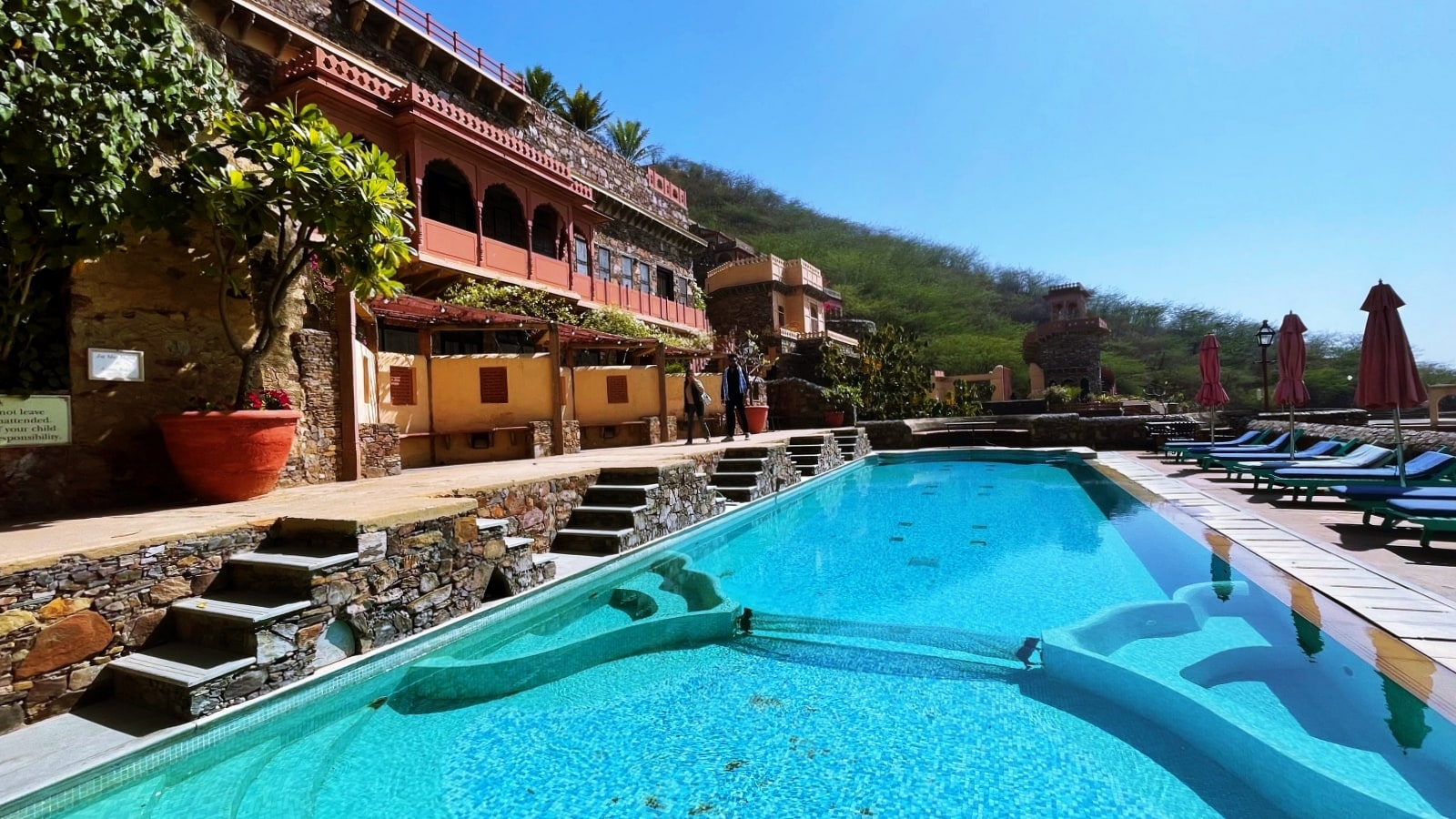 The historic royal Raj Kund has been transformed into a swimming pool where guests of Neemrana Fort-Palace can now take a refreshing dip.
The historic royal Raj Kund has been transformed into a swimming pool where guests of Neemrana Fort-Palace can now take a refreshing dip.
In all speculation, Neemrana Baori was a vital hub for trade, water management, and community life, strategically located along key trade routes in Rajasthan. It served as a rest stop for merchants and travellers to exchange goods and information, while doubling as a water reservoir to sustain agriculture and settlements in the arid region. The rulers likely boosted their treasury by levying fees on traders utilising its facilities and nearby markets.
The journey to this cryptic gem is deceptively mundane though. Just five minutes from the fort, you’d never guess what lies beyond the simple stone wall and modest gate between Vrindavan International Public School and Shree Balaji Water Supplier. No plaques herald its significance, no signs reveal its creators, and no inscriptions hint at its purpose. Like a guardian of its own secrets, the stepwell reveals itself only to those who venture past its unassuming entrance. What is known, however, is that plunging nine stories into the earth, this stepwell marks a pivotal moment in Neemrana’s local history. Though time has weathered its surfaces, the stepwell’s grandeur endures.
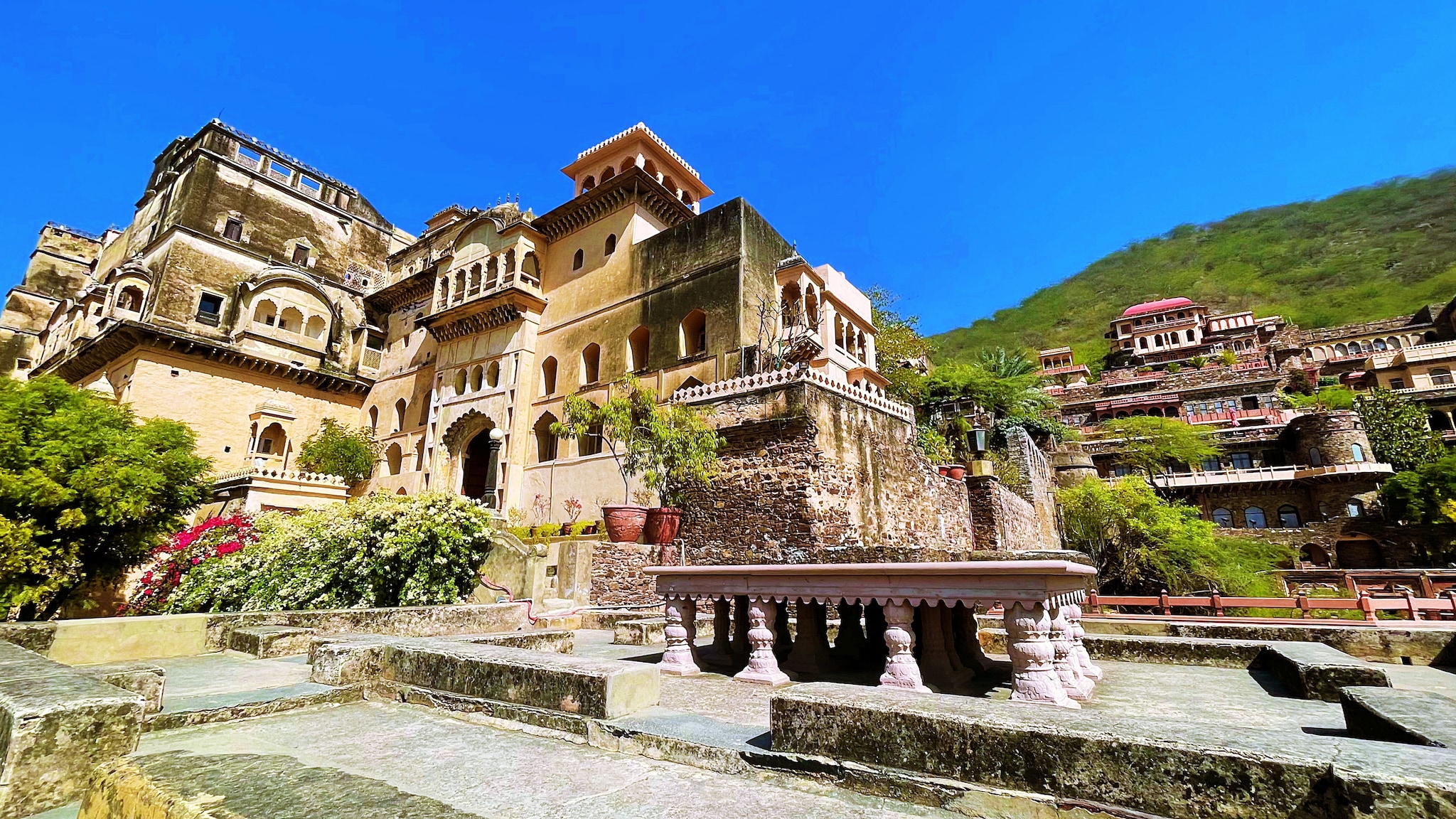 Neemrana Fort Palace, a 15th-century architectural marvel in Rajasthan, stands as a restored symbol of India’s regal heritage.
Neemrana Fort Palace, a 15th-century architectural marvel in Rajasthan, stands as a restored symbol of India’s regal heritage.
There are nearly 3,000 stepwells in India but Victoria Lautman, author of The Vanishing Stepwells of India, tells Forbes India, “What sets Neemrana Baori apart isn’t just its design but its sheer, awe-inspiring scale. While stepwells across Rajasthan and other parts of India often feature common elements—long colonnades, wall-buttressing supports, and extensive flights of steps—Neemrana’s grandeur is unparalleled. Its massive proportions outshine most, with only the Mertaniji Baoli in Jhunjhunu coming close in scale.”
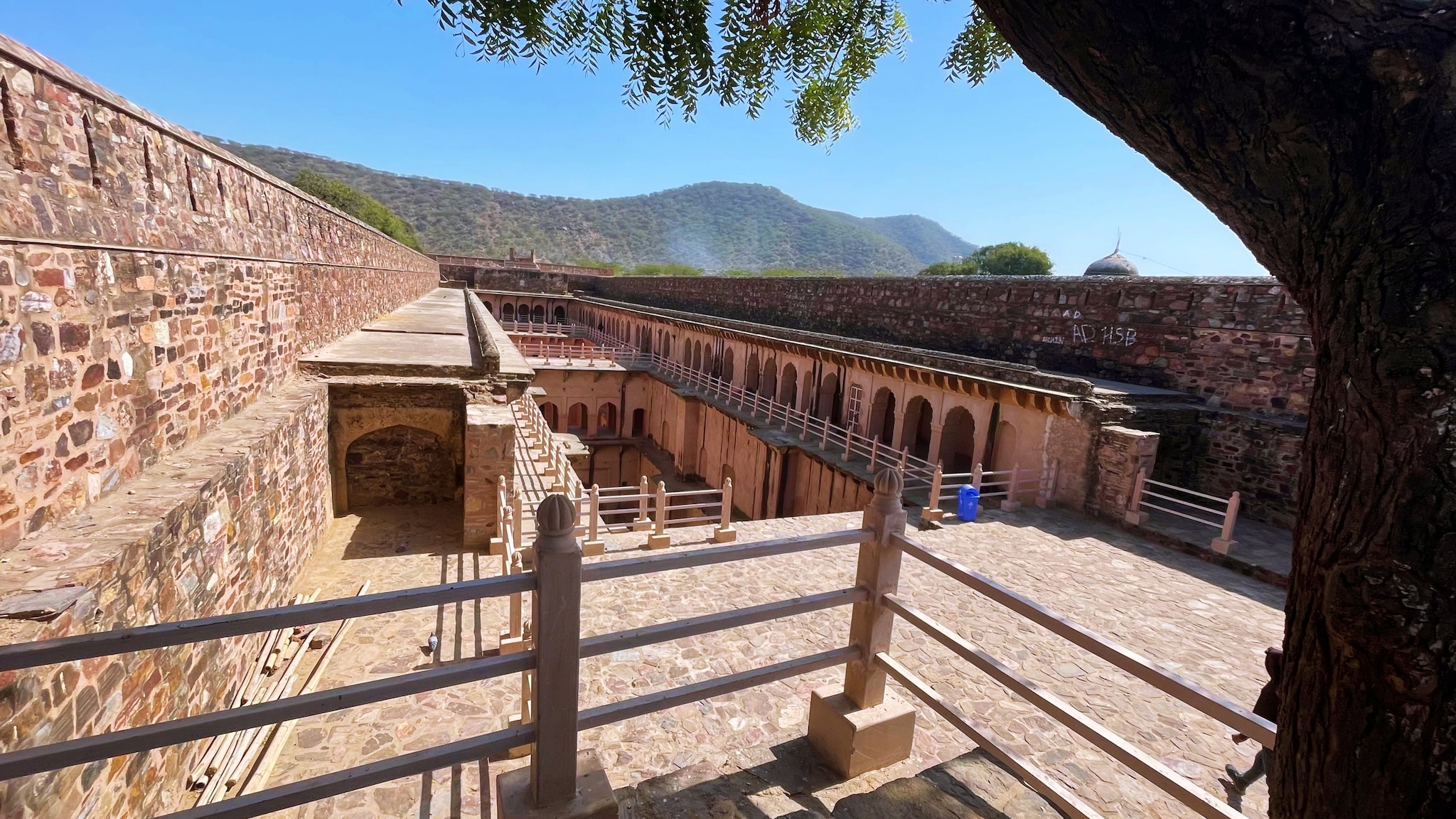 With its labyrinthine architecture and 170 steps carved into the lap of Aravalli hills, the Neemrana Baori stands as one of the most mysterious stepwell of its time.
With its labyrinthine architecture and 170 steps carved into the lap of Aravalli hills, the Neemrana Baori stands as one of the most mysterious stepwell of its time.
For Lautman, what elevates Neemrana Baori beyond its physical dimensions is also its element of surprise. “It’s exceptionally deep, and its dramatic reveal is unforgettable. Hidden in plain sight along a dusty road, it appears unassuming until you step closer. Suddenly, you’re confronted with this immense, ancient, man-made chasm. It’s indescribable and must be experienced to be fully understood,” she says, adding that it was Neemrana Baori that ignited her lifelong fascination with stepwells. “Seeing it for the first time was transformative—it changed the entire course of my life.”
Also read: The age-old shipbuilding town of Mandvi is flexing its history
She is baffled by the state of the baori and the fact that it remains relatively unknown. “An extraordinary structure like Neemrana should be featured in every guidebook, architectural history book, tourist itinerary, and school textbook. The fact that it remains largely unknown, both outside and within India, is baffling to me. It’s located near a major highway, frequented by millions of tourists each year—yet it remains hidden in plain sight, much like Chand Baori near Jaipur. And the Neemrana Fort, just nearby, is a great spot for lunch.”
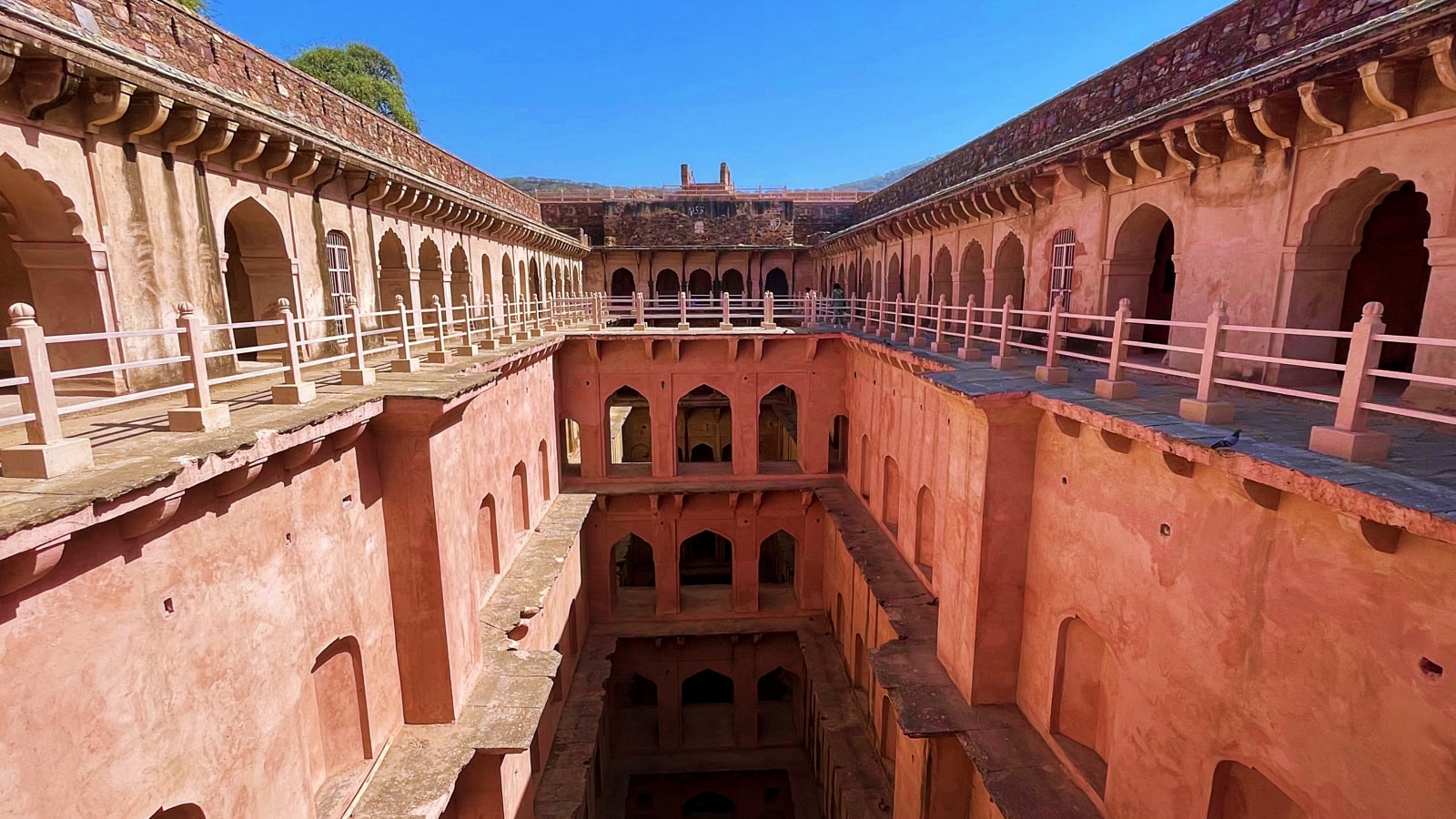 Plunging nine stories into the earth, Neemrana Bawdi (stepwell) marks a pivotal moment in Neemrana’s local history.
Plunging nine stories into the earth, Neemrana Bawdi (stepwell) marks a pivotal moment in Neemrana’s local history.
Pointing out the significant deterioration of the stepwell, she adds, “Neemrana Baori is in a much more dilapidated state—at least the times I visited—without railings, with steep, loose stairs, and no guards. Anyone could trip and get hurt. If you’re bringing in tourists, there needs to be some protection.” If it could be sensitively stabilised, minimally altered, and made safer—perhaps by restricting access to the lower levels—it could become a major attraction, she says. “Locals would benefit economically, and take immense pride in preserving such an architectural gem.”
Meanwhile, if a caravan adventure piques your interest, the TreeHouse Sunrise Resort & Caravan Park in Neemrana also offers the perfect setting to relive long-lost Neemrana tales around a bonfire beneath a starry sky. Jayant Singh, founder and managing director of TreeHouse Hotels, also suggests visiting Bala Quila, the ‘Young Fort’ before one departs the town. Built in 1550 by Hasan Khan Mewati, this hilltop fortress spans 5 kilometres, boasts six grand gateways, and has witnessed the era of Mughal emperors, Marathas, and Jats—a fitting finale to Neemrana’s layered history.
